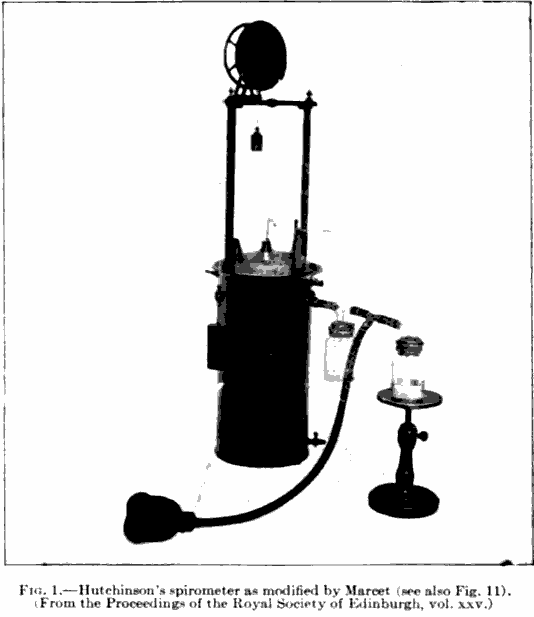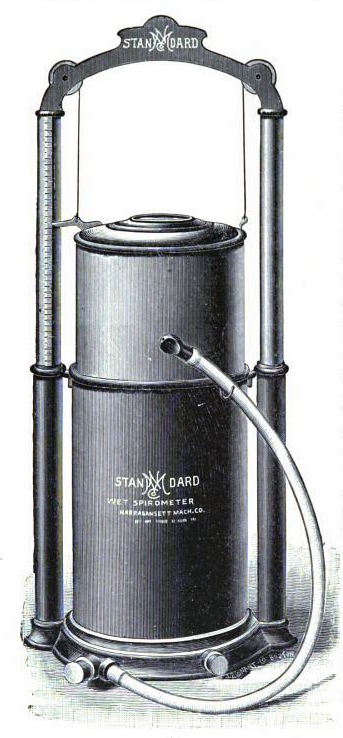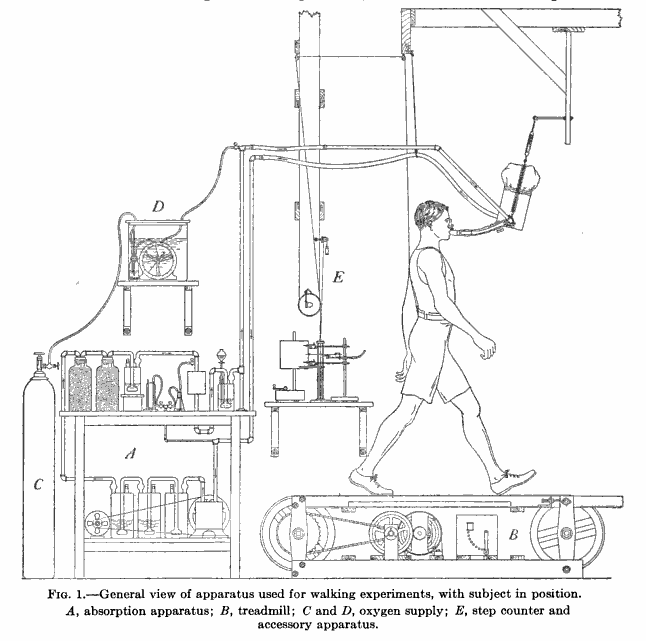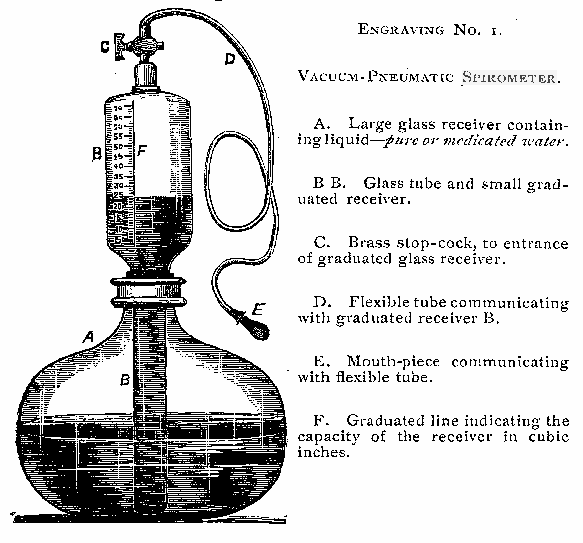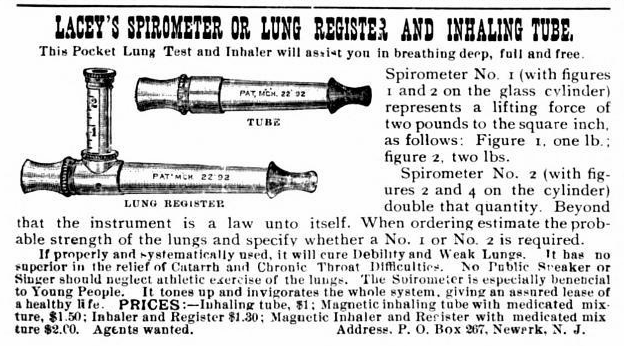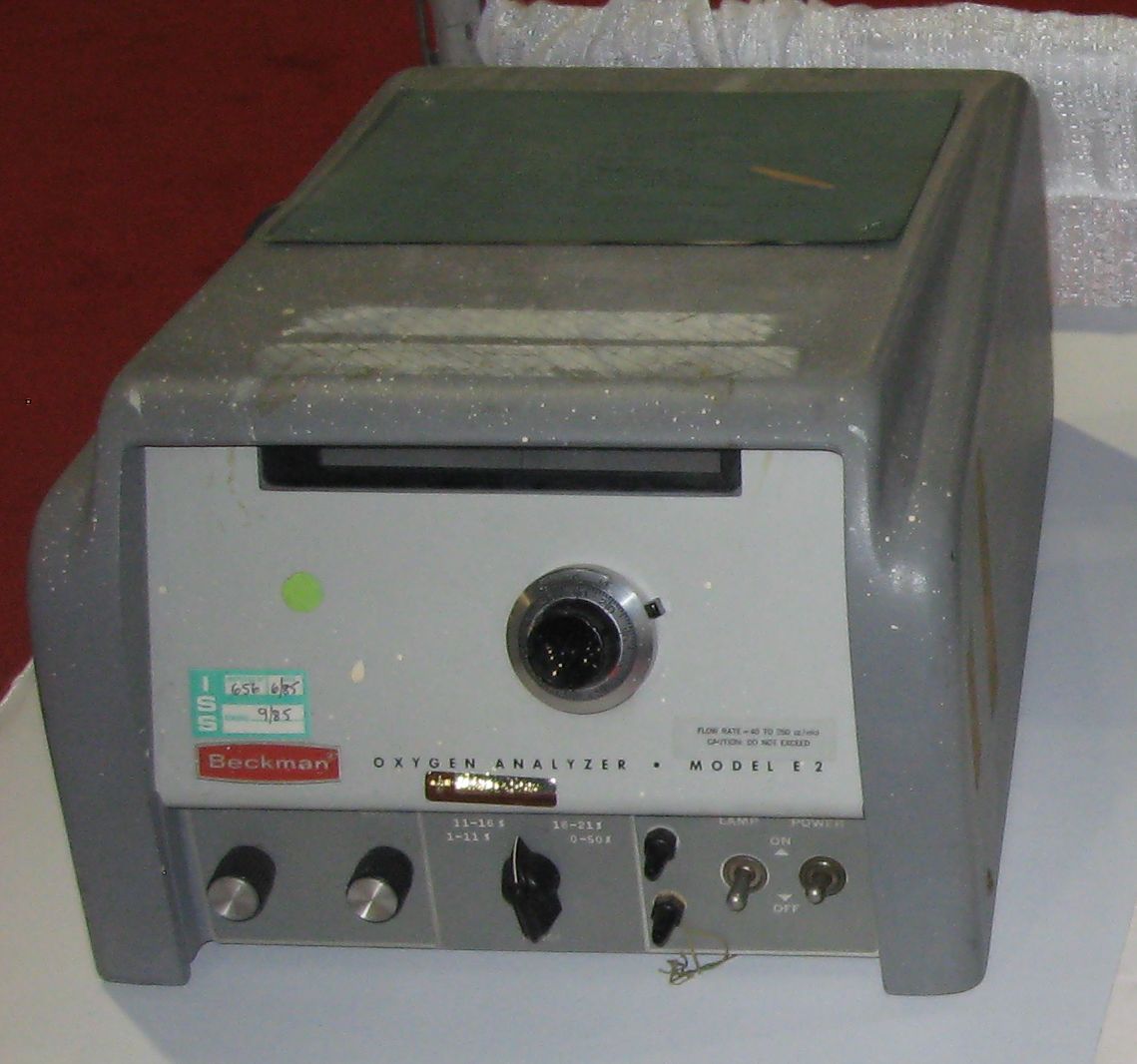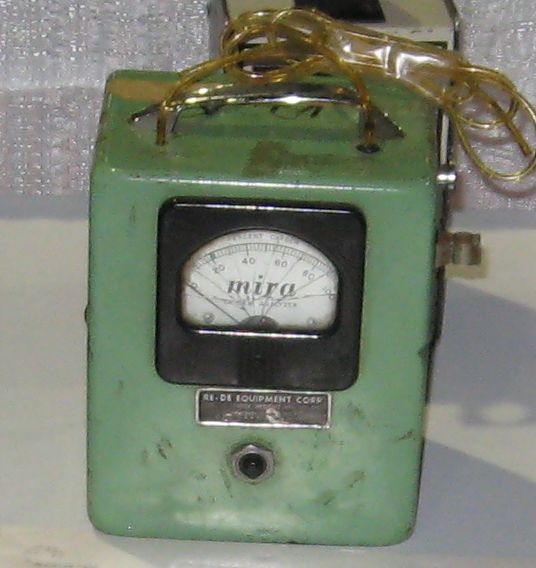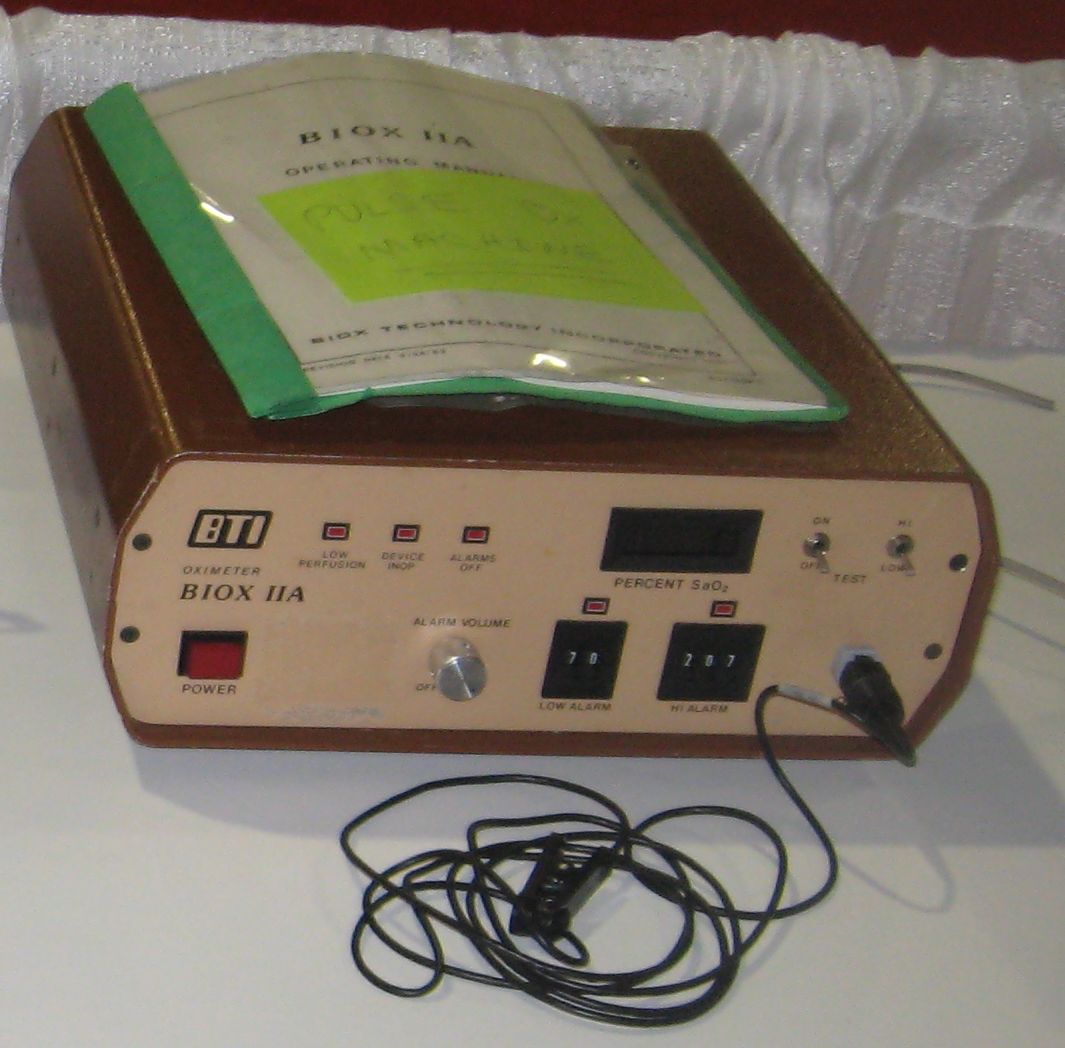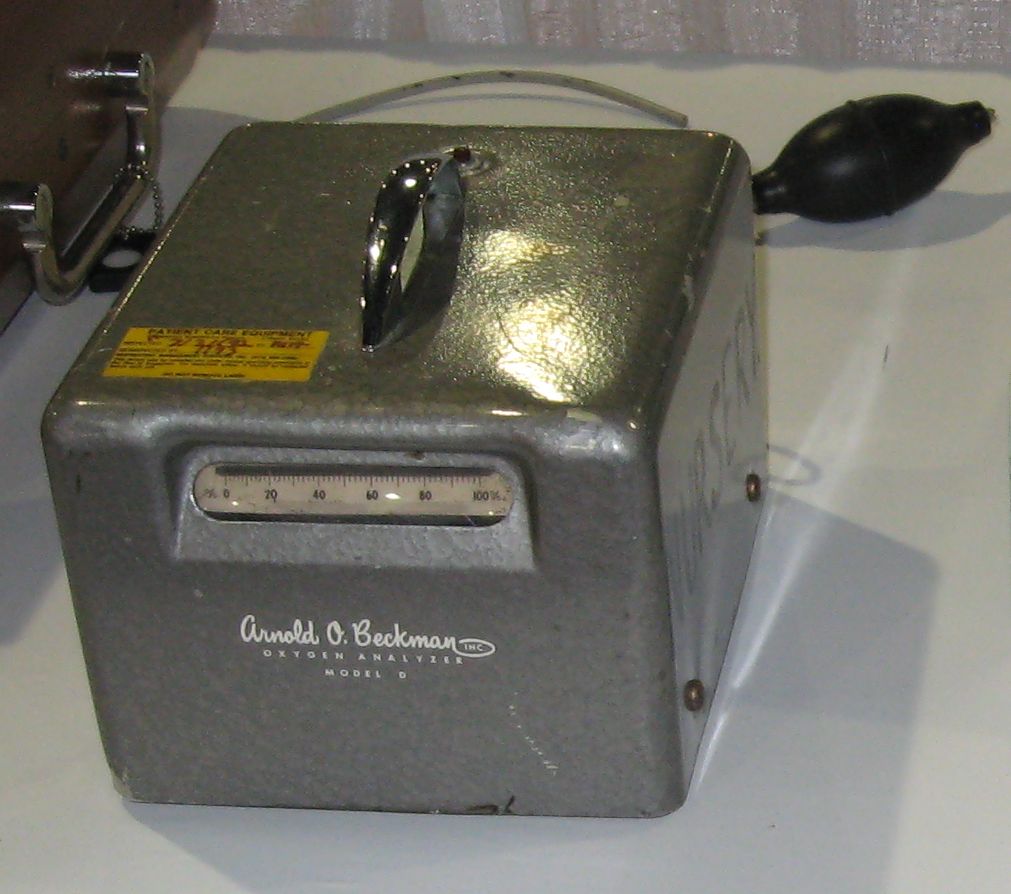From: The Harvey Lectures, Volume 3, 1909, page 226. A standard Hutchinson-style spirometer outfitted with what appear to be Muller (water seal) one-way valves and a mask for measuring tidal or minute volume.
Monthly Archives: February 2014
Spirometer, Narragansett Machine Co., 1916
From: Catalogue of Gymnastic Equipment, Narraganasett Machine Company, 1916, page 152.
“The wet spirometer is generally admitted to be the only device for measuring lung capacity that will continue to record accurately. There is no rubber reservoir to leak or harden and crack in two or three years; an air cylinder immersed in water never leaks or wears out. The air cylinder is made of sheet zinc, and as it is made on an arbor they are exactly the same size and capacity, and record accurately their cubic contents. This cylinder is carefully balanced by weights that run in the tubes at the sides. The side tubes are polished brass and one of them is graduated to measure the height, and consequently the volume contained in the cylinder. One side of the tube is graduated to cubic inches, the other to cubic decimeters. The stopper at the left lets the air out of the cylinder for it to descend, and that at the right has has been replaced by a valve to let the water out of the tank. All parts except the brass tubes are finished in white. It has a capacity of 400 cubic inches or 6.5 cubic decimeters (liters).
A convenient shelf is made to hold the spirometer when no other support is available.
No. 595. Wet Spirometer. Weight 25 pounds. Packed for shipment.”
Exercise testing, 1915
Spirometer, Jones Vacuum Pneumatic, 1888
Spirometer, Lacey’s, 1892
Spirometer, Deyton Radial, 1890
Oxygen Analyzer, Beckman, Model E2, circa 1960’s
Oxygen Analyzer, Mira, circa 1970’s
Oximeter, Biox IIA, circa 1980’s
Oxygen Analyzer, Beckman Model D, circa 1970’s
Paramagnetic oxygen analyzer. Mechanism was a glass dumbbell suspended by a glass thread between the poles of a magnet. The amount by which the dumbbell rotated depended on the amount of oxygen in the sample chamber. A light reflected off a mirror attached to the dumbbell and showed up as a light spot on the front panel display. The black bulb in the rear was used to pull a gas sample into the analyzer. Photo is courtesy of Jim Sullivan, Supervisor, Pulmonary Diagnostic Laboratories at Memorial Sloan-Kettering Cancer Center.
